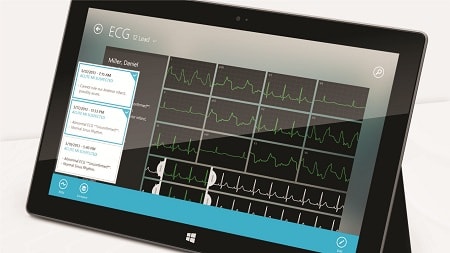Over the last few years, the healthcare industry has undergone an incredible revolution. Mobility solutions deployed across the care continuum are providing higher quality patient care. The shift from fee-for-service to fee-for-value – no matter how the political environment affects the market – is prevailing. Beyond that, innovation and digital tools are supportir Pressures Pushng this shift. In the U.S. alone, there are more than 6,000 medical device companies. Around 80 percent of them have fewer than 50 employees. Creative solutions to longstanding problems abound.
We are at a critical time. By 2019, measurements will be in place that monitor this metric of value-based care, as well as the providers being impacted by those regulations and their own performance outcomes. Consequently, this shift from fee-for-service to fee-for-value will be a massive driver for merger and acquisition activity in the health IT industry.

Provider Pressures Push Vendors to Change
The pressure on providers to overhaul their cost structure in preparation for the new value-based care payment model has led to significant budget reductions, impacting employee headcounts and resource investment. Essentially, they have to do more with less. However, as we move into 2018 and 2019, providers will start looking at what they need to do to improve care and avoid penalties. Many providers – especially the smaller ones – will come to realize just how far behind they are. They are going to scramble for ways to change and will turn to their IT vendors for help.
Those providers will face major roadblocks – for example, sorting through 6,000 individual IT products is simply not an option. They need one thing that works, and they need it quickly. Consequently, interoperability will become more crucial than ever before. Without interoperability, the data workflows simply will not work.
Interoperability – Finally?
While interoperability is critical – and must be our ultimate goal – getting there is a challenge. It is a huge lift for even two companies to have interoperable systems: they must be integrated, data has to be able to be researched, and both companies must spend development resources to make sure they are interoperable. It costs money. And then there are lingering questions in overlapping functionality, IP issues, who owns the customer relationship, etc.
True interoperability takes patience and commitment to be successful. It can absolutely be done, but building this sort of ecosystem successfully is difficult if not every company involved is fluent in this process. In the end, what we’ll see over the next two years is an insatiable need to have systems work together. A merger or acquisition is the likely solution for those unable to adapt quickly enough.
While larger health IT companies may have an easier time of providing significant value in a changing market, the smaller vendors will face a hard choice. Their priority focus now must be on developing their core technology to demonstrate its true clinical value, rather than spreading what little resources they have across R&D. Without splitting their time and resources, M&A will be the only way for their creative concepts to survive and permeate the market.
Chaos Creates Opportunity
The idea of mergers and acquisitions becoming commonplace in an industry can often raise questions about whether innovation will be stifled. Nevertheless, this kind of chaos can actually drive opportunity and creativity.
The first quarter of 2017 saw a spike in Series A investments in health IT companies. The kinds of devices, apps and solutions that received this funding are all in early stages, with products barely developed. But they have great ideas. These companies are going to benefit from a market that’s shifting and finally finding its footing as they grow over the next two years. The more opportunity people see in the space, the more newcomers enter the market, the more investors put capital in the space, and the more we drive the cycle forward.
 This era of M&A is going to be one of exciting transition. It will be interesting to see who comes out on top in the battle to offer actionable data that actually influences and improves patient care.
This era of M&A is going to be one of exciting transition. It will be interesting to see who comes out on top in the battle to offer actionable data that actually influences and improves patient care.



















